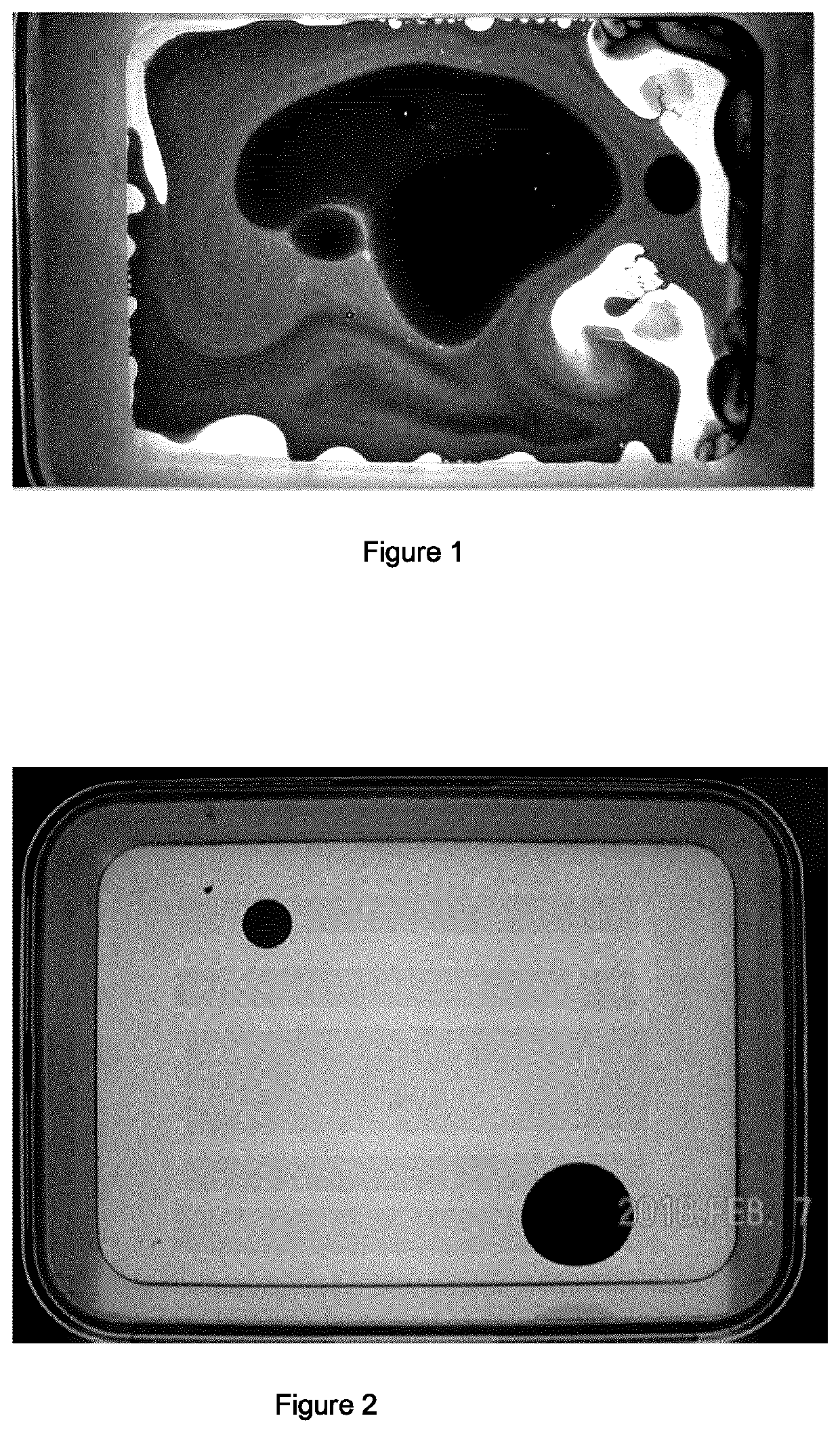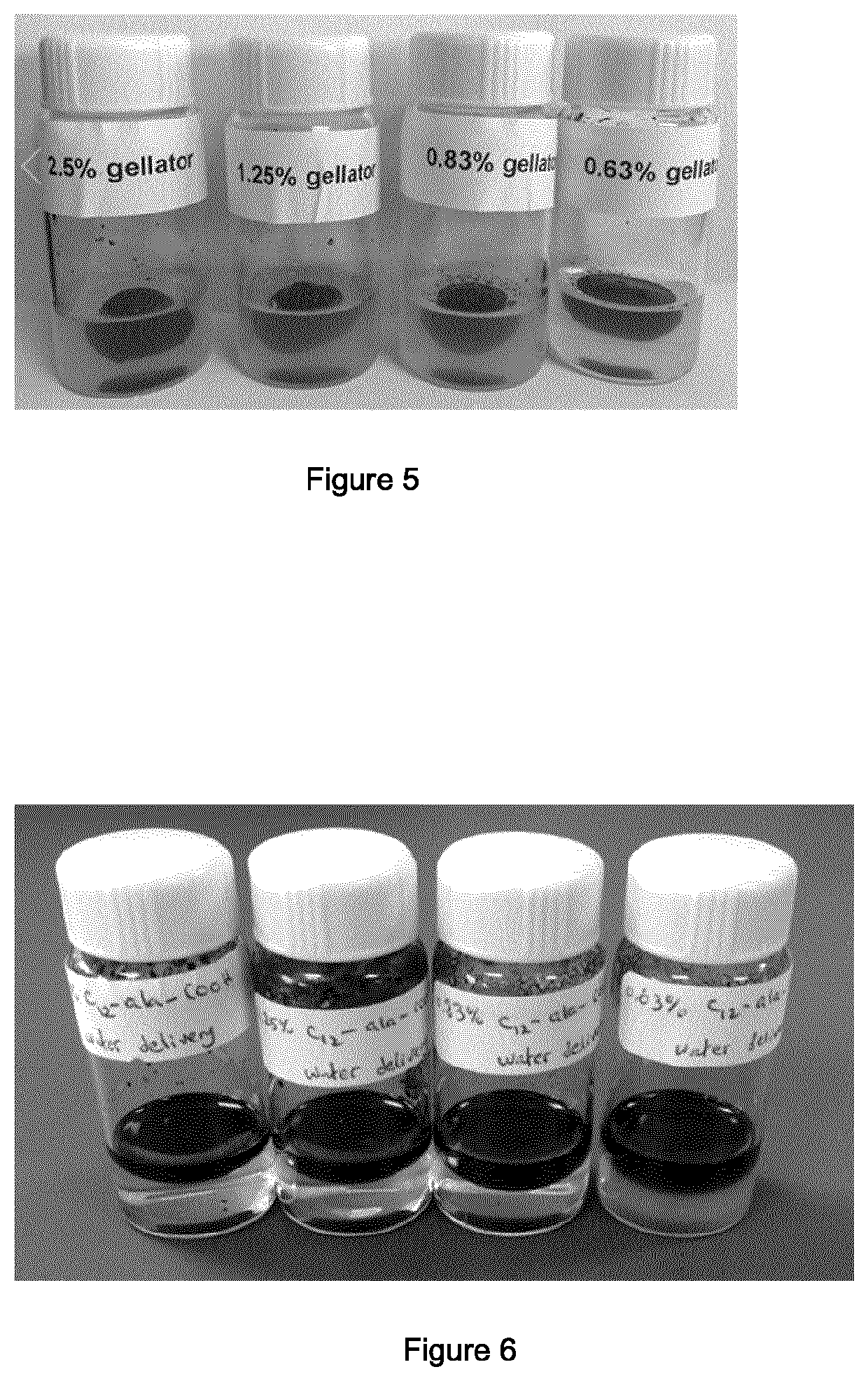Products and methods for the treatment of mixtures of water and hydrophobic liquids
a hydrophobic liquid and mixture technology, applied in the field of chemical-based methods and products for treating mixtures of water and hydrophobic liquids, can solve the problems of significant environmental damage, potential severe social and economic impacts, and oil spills that evolve rapidly, so as to reduce the area of oil slicks, increase the viscosity of oil, and increase the thickness of oil slicks
- Summary
- Abstract
- Description
- Claims
- Application Information
AI Technical Summary
Benefits of technology
Problems solved by technology
Method used
Image
Examples
example 1
Synthesis of N-(3-amino-3-oxopropyl)dodecanamide
[0157]B-alaninamide (3 g, 24.1 mmol) was added to chloroform (80 mL). This mixture was cooled in an ice bath. Triethylamine (5.36 g, 53 mmol) was added via syringe. The mixture was stirred for two minutes after which lauroyl chloride (5.80 g, 26.5 mmol) was added dropwise via syringe. The reaction was allowed to warm to room temperature and stirred overnight. The product was isolated by suction filtration as a white powdery solid (5.86 g, 90%).
example 2
Synthesis of L-Alanine, N-(1-oxododecyl)-, hydrazide
[0158]L-alanine methyl ester hydrochloride (4 g, 28.6 mmol) was dissolved in chloroform (60 mL). Triethylamine (6.38 g, 63 mmol) was added via syringe. The mixture was cooled in an ice. Lauroyl chloride (6.9 g, 31.5 mmol) was added dropwise via syringe. The ice bath was removed and the reaction was stirred at room temperature overnight. The crude reaction was diluted with chloroform (300 mL). The organic phase was washed with 0.2 M HCl (1.5 L), 5% NaHCO3 (800 mL) and saturated brine (300 mL). The organic phase was dried over sodium sulphate and filtered. The solvent was removed under reduced pressure to yield the methyl ester as a white solid in quantitative yield.
[0159]The methyl ester (1.5 g, 5.1 mmol) was dissolved in methanol (40 mL). Hydrazine monohydrate (7.70 g, 154 mmol) was added dropwise. The reaction was stirred overnight at room temperature. Additional methanol (50 mL) was added to the reaction which was stirred for an ...
example 3
Preparation of L-Alanine, N-(1-oxododecyl)-, sodium salt
[0160]L-Alanine, N-(1-oxododecyl)- (1 g, 3.7 mmol) was suspended in water (50 mL). Sodium hydroxide (0.15 g, 3.7 mmol) was added as a solid. The mixture was agitated. Additional water was added if necessary to solubilize the salt. The solution was used as is.
PUM
| Property | Measurement | Unit |
|---|---|---|
| Percent by volume | aaaaa | aaaaa |
| Thickness | aaaaa | aaaaa |
| Solubility (mass) | aaaaa | aaaaa |
Abstract
Description
Claims
Application Information
 Login to View More
Login to View More - R&D
- Intellectual Property
- Life Sciences
- Materials
- Tech Scout
- Unparalleled Data Quality
- Higher Quality Content
- 60% Fewer Hallucinations
Browse by: Latest US Patents, China's latest patents, Technical Efficacy Thesaurus, Application Domain, Technology Topic, Popular Technical Reports.
© 2025 PatSnap. All rights reserved.Legal|Privacy policy|Modern Slavery Act Transparency Statement|Sitemap|About US| Contact US: help@patsnap.com



